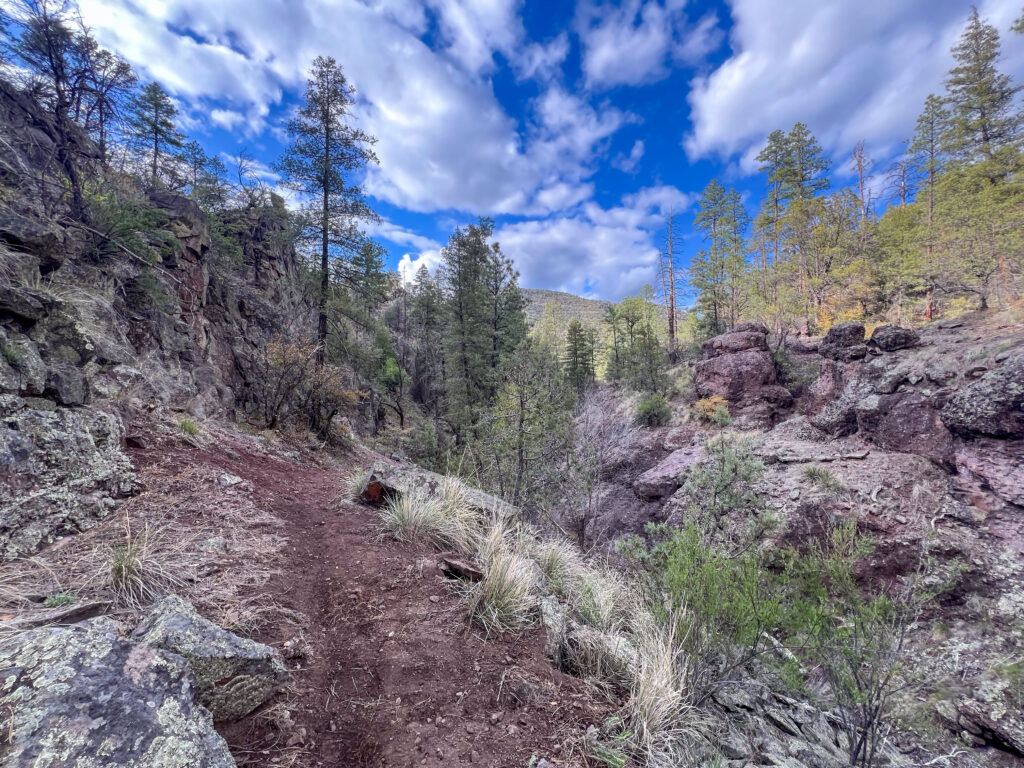
Written by Dexter Kopas, Wild Stew Field Crew Leader.
Arizona is making the transition from the bloom and rains of spring to the dry heat of the early summer, which means Wild Arizona’s crews are transitioning out to work in the forested highland regions along the border with New Mexico. Our adult crew will be visiting this beautiful and remote region for much of the summer, amongst pine, fir, spruce, cypress, maple, free-flowing streams, and abandoned cabins to escape the heat of the lowlands. For our first offering of the season, we pointed our minds and tools at the Strayhorse Trail in the Apache–Sitgreaves National Forest.
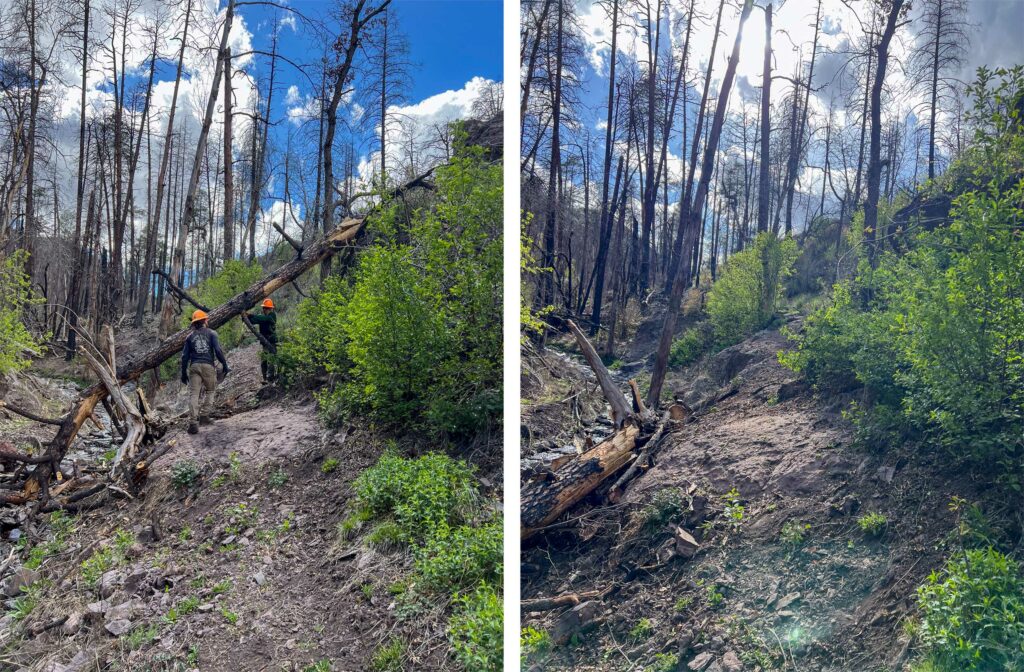
Visiting for the first time since two hitches a year ago, we started our descent down from highway 191 past familiar log cuts and cairns, finding not a few unfamiliar uncut logs having surrendered to gravity in our absence. After a wetter than normal winter, we noticed the Strayhorse Creek running higher up the trail than before, starting a non-stop eight days of hearing rushing water in the background above the log cabin ruins at Strayhorse Spring. We descended not much further this first day to revisit an old campsite, this time joined by Alex and Owen from the Forest Service, who helped us for the first three days.
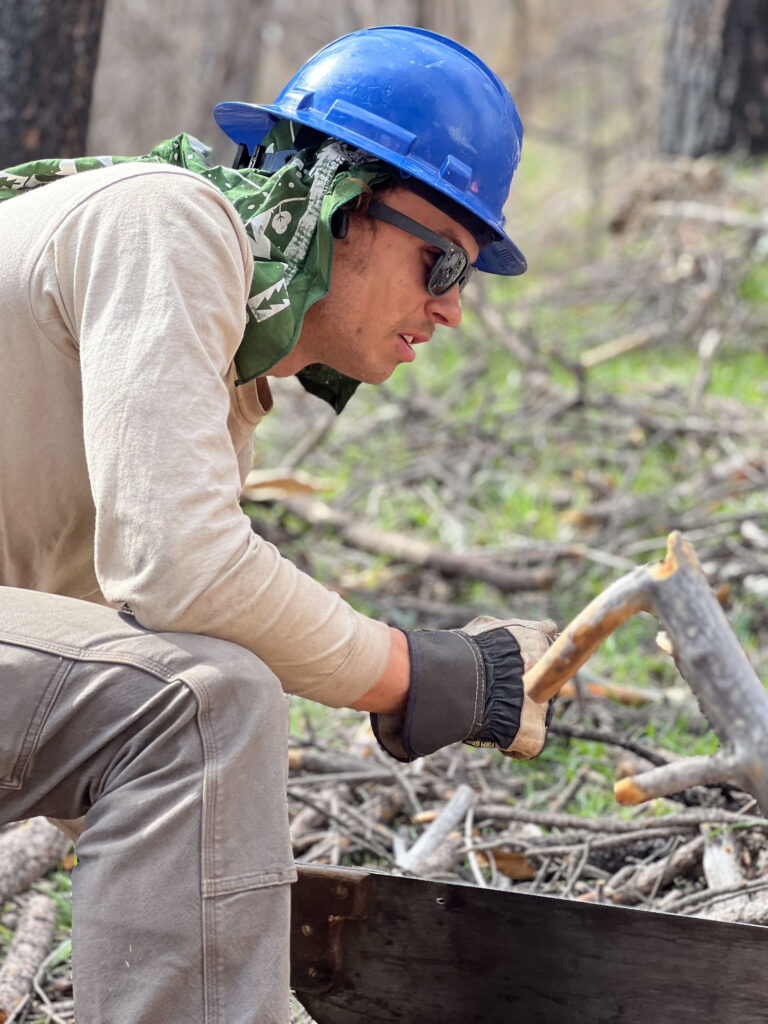
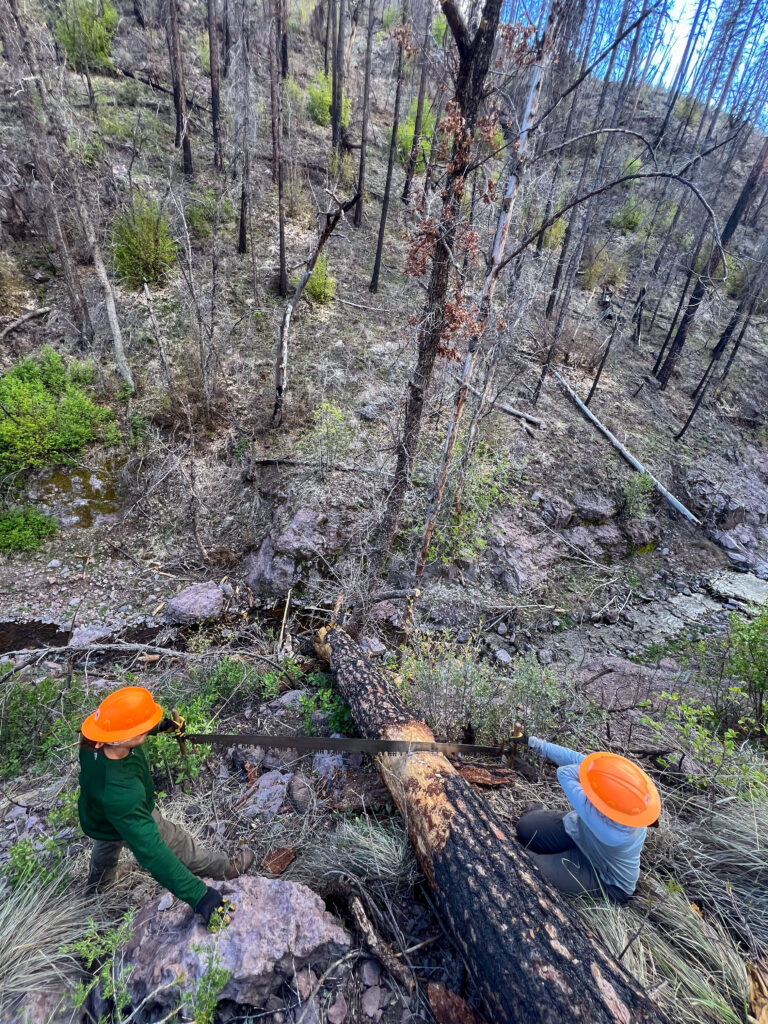
The next day we packed up camp to head further down past our old work. Entering into a wildfire burn scar, we found and cut many more logs freshly fallen as we made our way down to a new campsite safely below sturdy, living trees. Our next five days were spent searching for and reestablishing the trail as it zigged and zagged across the creek. We had fun playing trail detective, trying to find where the route had been originally established, and at times making decisions between several concurrent paths. It was especially satisfying to find the hidden passage above a narrow part of the canyon where the old trail was cut into the hillside, or discovering the faint marks of a wayfinding blaze cut into tree bark decades ago.
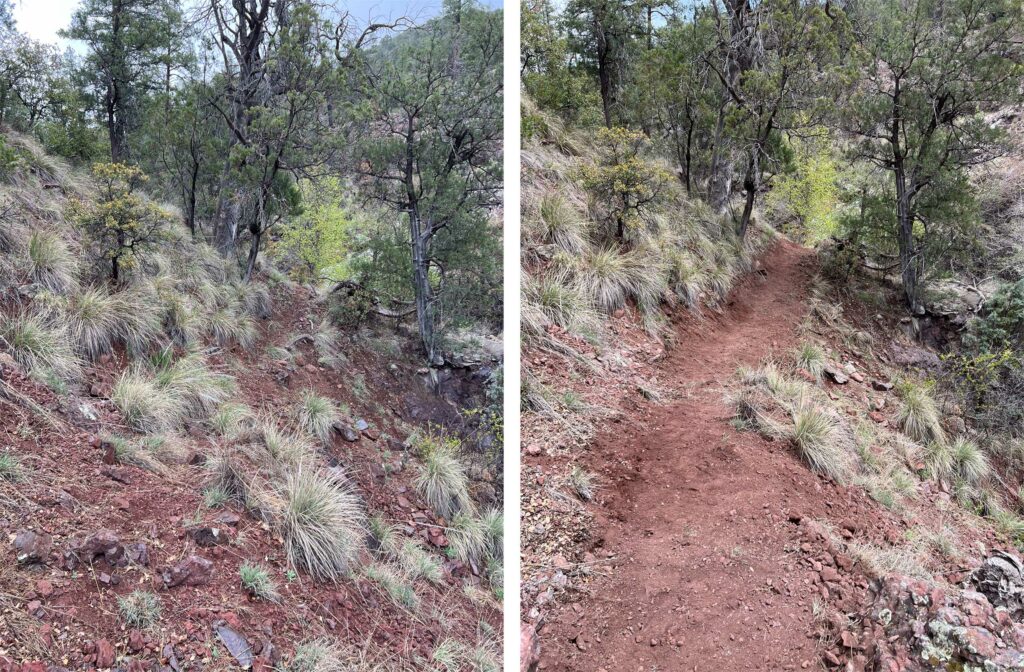
Working in such a seldom-worked-on, seldom-hiked, and frequently-flooded area, our methods changed a bit from recent hitches on some of the most popular trails in the region. Gone were the 8-person tread trains and the half-days spent on a precise rock retaining wall. Instead we favored minimal tactics to cover a lot of ground quickly. Once a trail routing had been established, we would mostly just cut back the brush for a wide corridor, use our seasoned crosscut saws to cut fallen logs, scratch in enough tread to walk happily, and build sturdy cairns to show the way in ambiguous terrain. In the end, we found and reestablished two miles of trail beyond our work from last year.
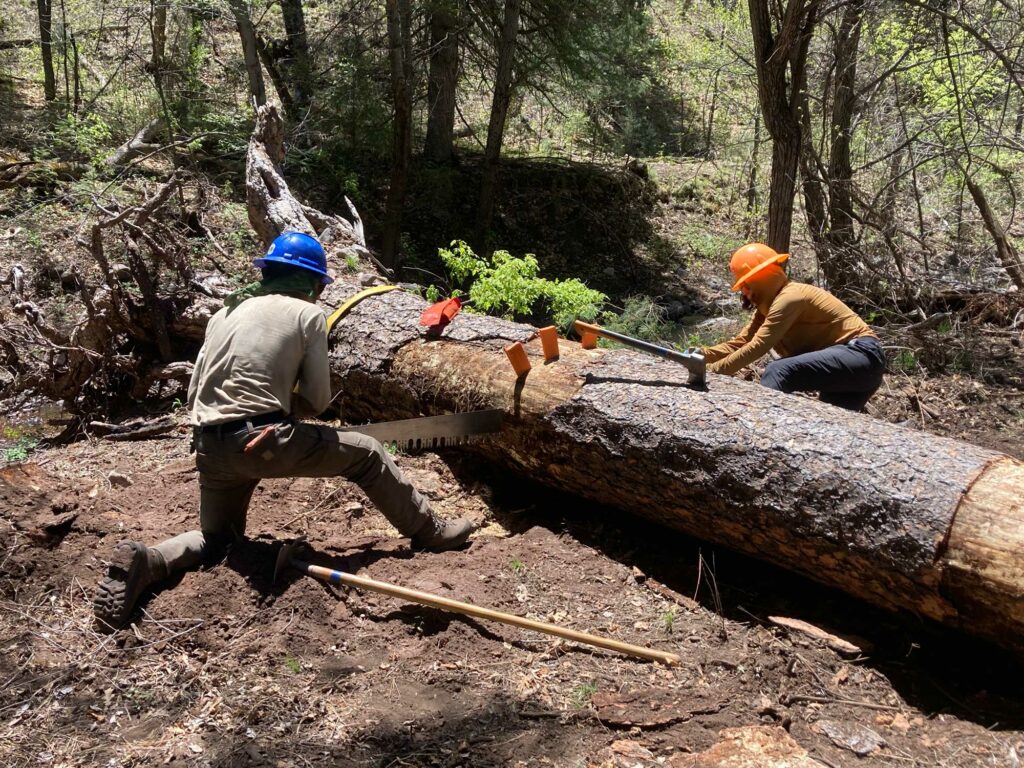
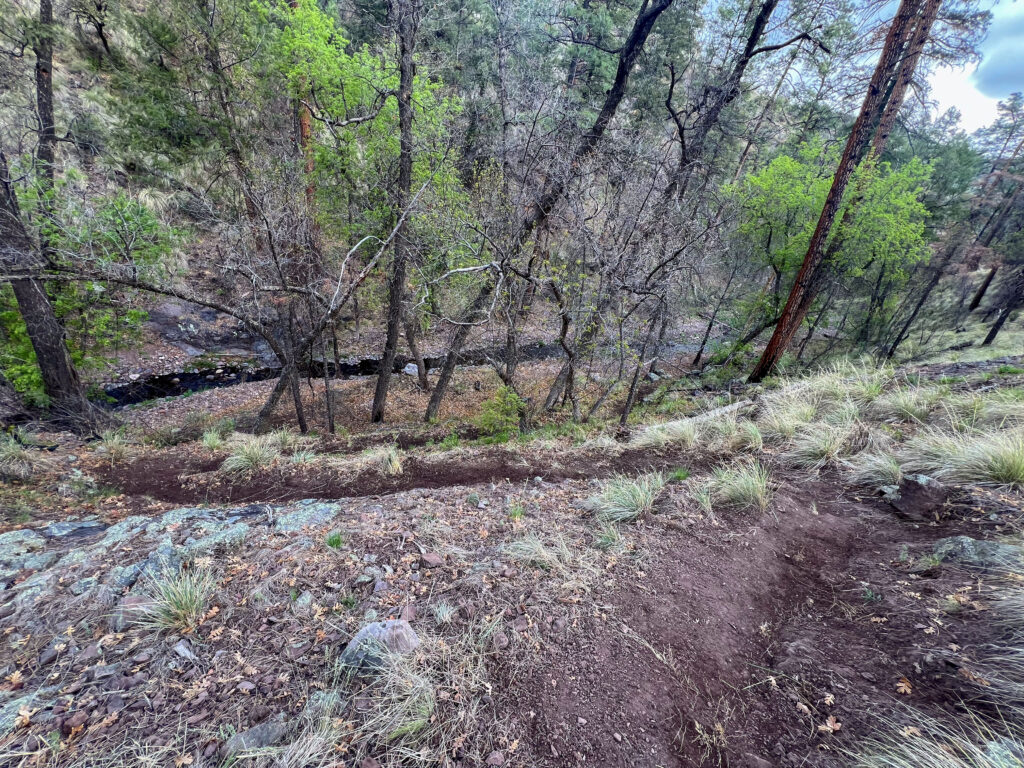
For this blog writer, many evenings post-work and pre-dinner were spent engaging in this game a little further, taking runs down the canyon, getting a glimpse of the work that was to come and feeling the excitement of wondering what would be found around the next corner. It’s a joy to once more have the sun be sticking around so long. After a while, you start to think like the trail and predict where it might go. I would return to camp after these mind-clearing trips to our temporary home to find crewmates playing card games, hacky-sacking, testing out rock water slides, or just basking in laughter and camaraderie.
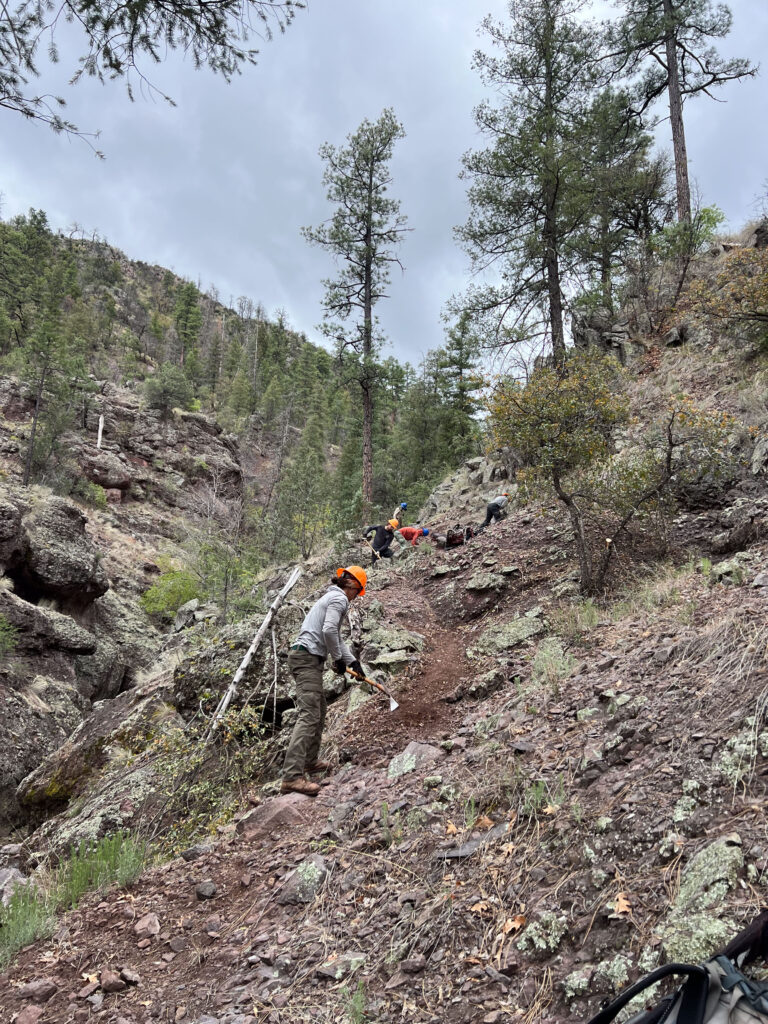
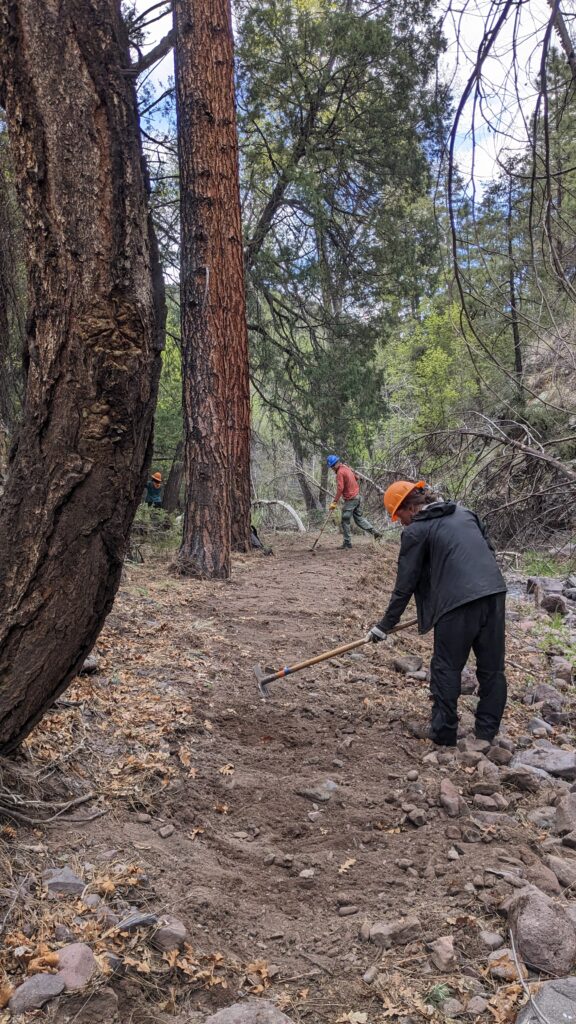
It was a bittersweet end once again to this hitch, as one of our comrades, Iman Chatila, is now heading up to Colorado for a summer gig working on the trail crew of Rocky Mountain National Park. We are thankful for the equally enriching community and trail building skills she brought to our crew these last eight months, and we wish her all the best as she transitions to her next step.
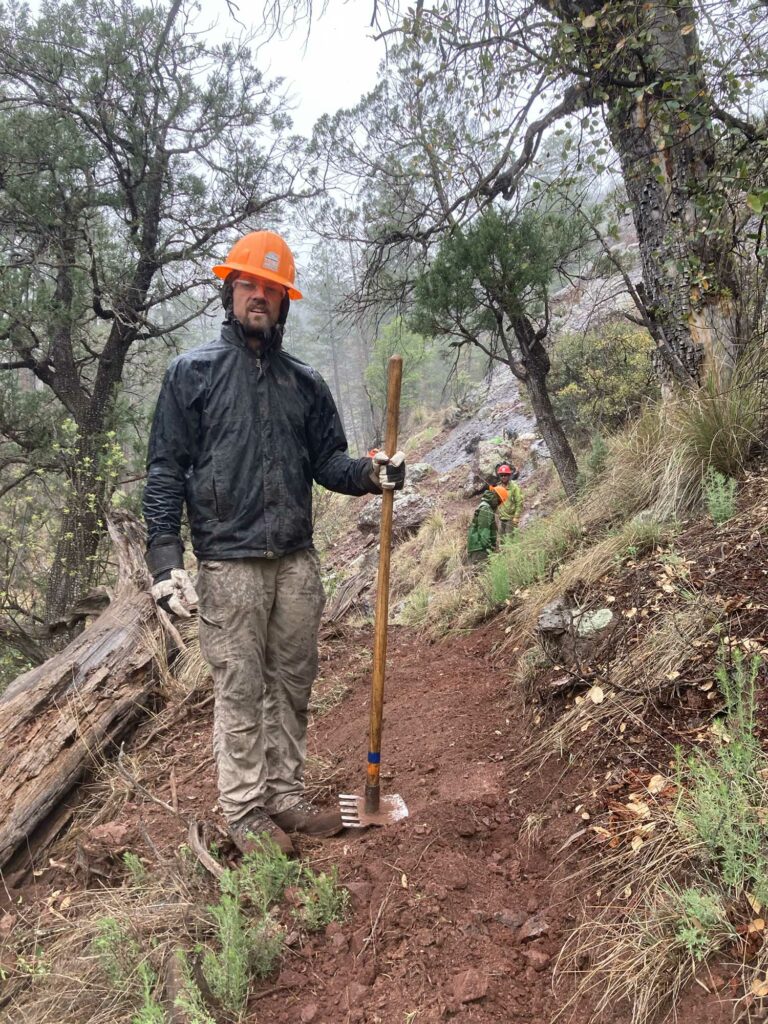
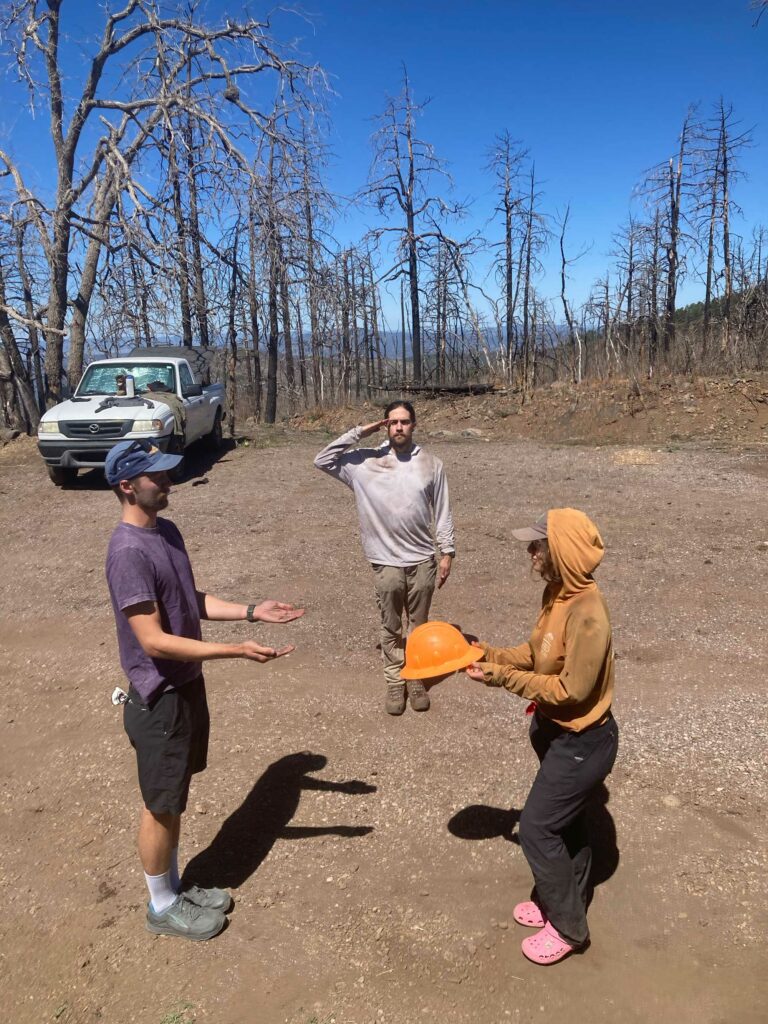
It was a pleasure to share this land with the many critters who call it home, such as golden eagles, bridled titmice, yellow-rumped warblers, red-faced warblers, American robins, white-breasted nuthatches, painted redstarts, turkey vultures, regular ol’ turkeys, abert’s squirrels, yellow-eyed juncos, and one adorable striped skunk seen happily scouring its way up the hill. The only unwelcome resident was a black bear who decided they didn’t like Nico’s tent where it was and proceeded to tear it and just about all of its contents, even though he had properly hung his food and didn’t eat near his tent. Oh well, good thing next time we’ll be camping several miles down canyon. A reminder that we are visitors.
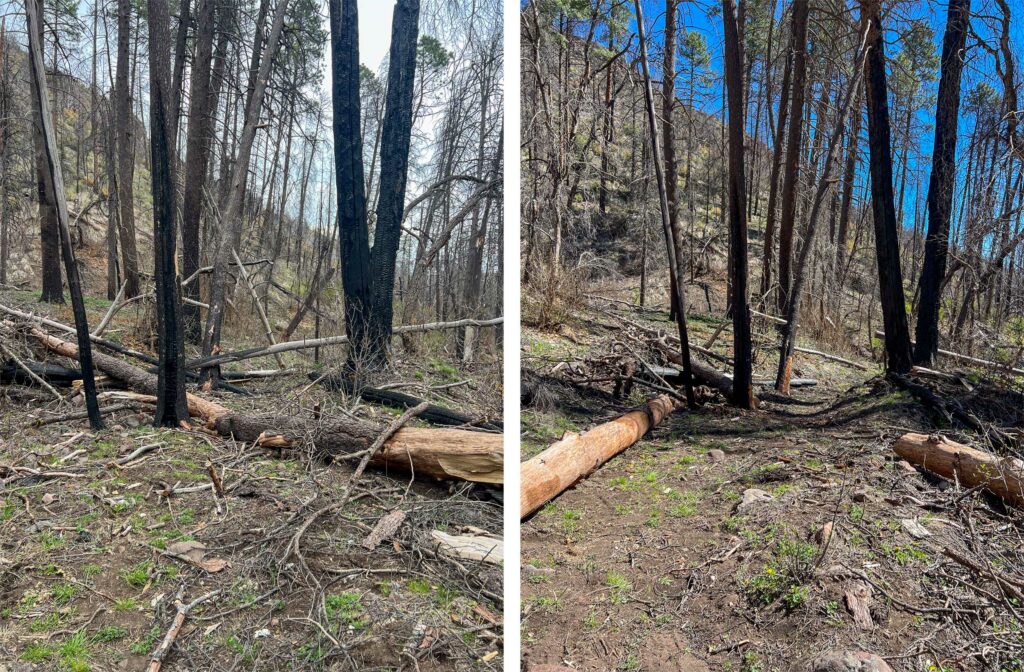
Speaking of visitors, I encourage anyone who likes a solitary hike through a diverse woodland along a stream flanked by giant trees and walls made of ancient supervolcanoes towards old log cabins to check out the Strayhorse Trail. It can be found along highway 191, 44 miles north of Morenci, 46 miles south of Alpine, just north of mile marker 206. The first 7 miles are in great shape, just waiting to be discovered and appreciated.
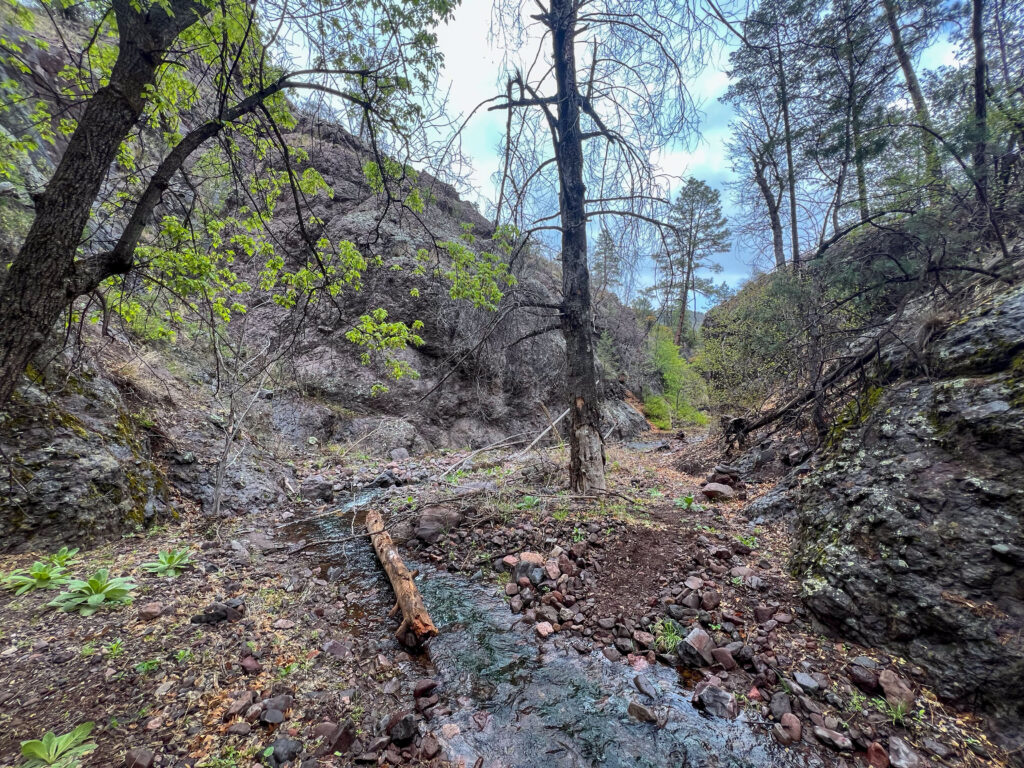
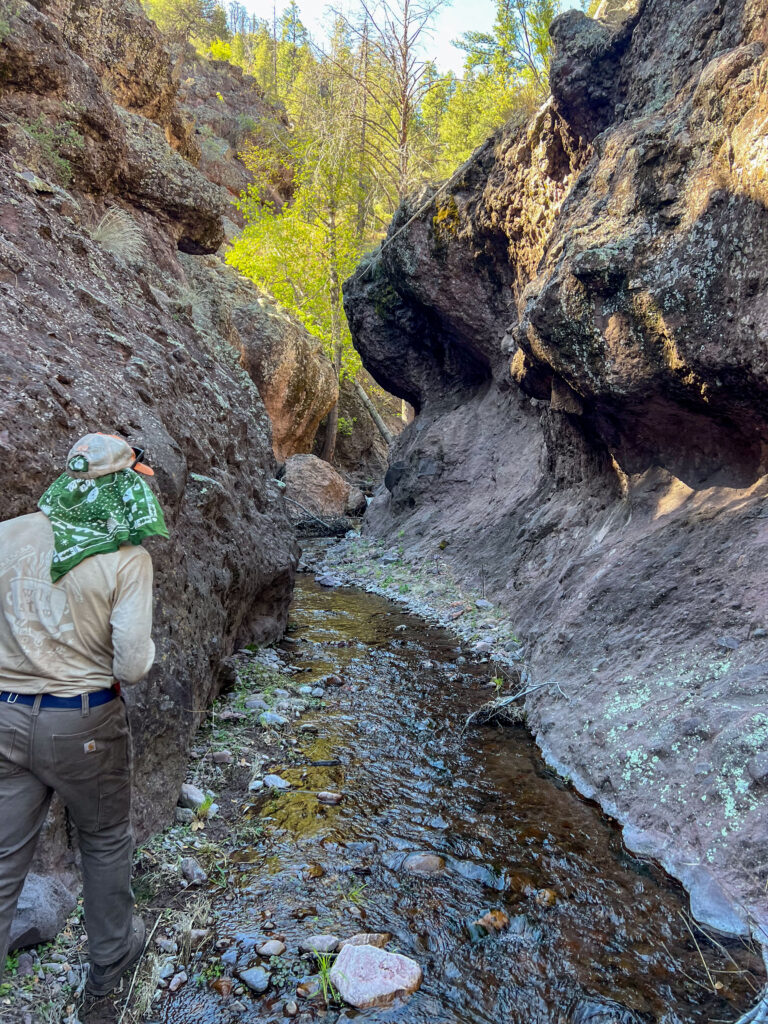
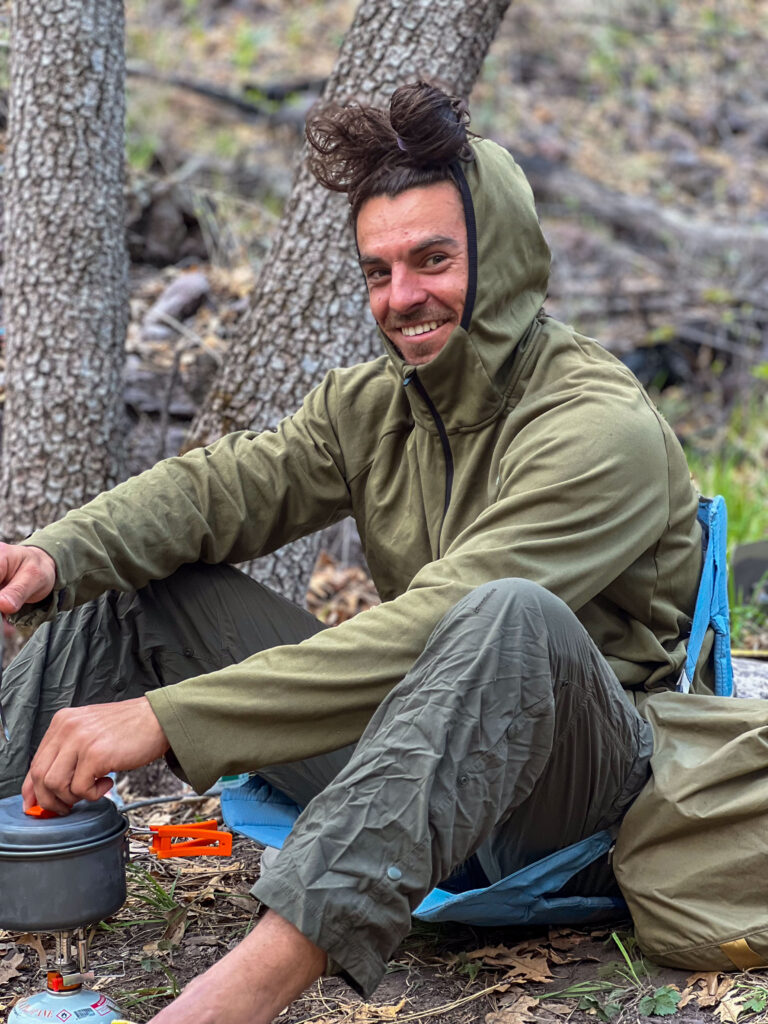
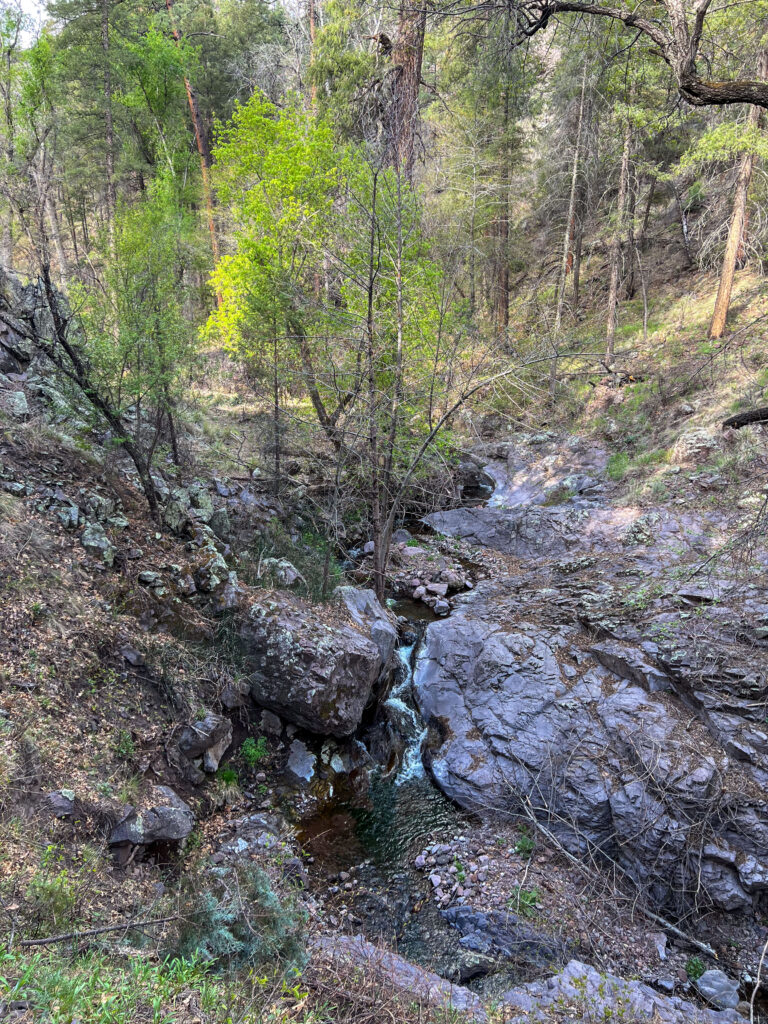
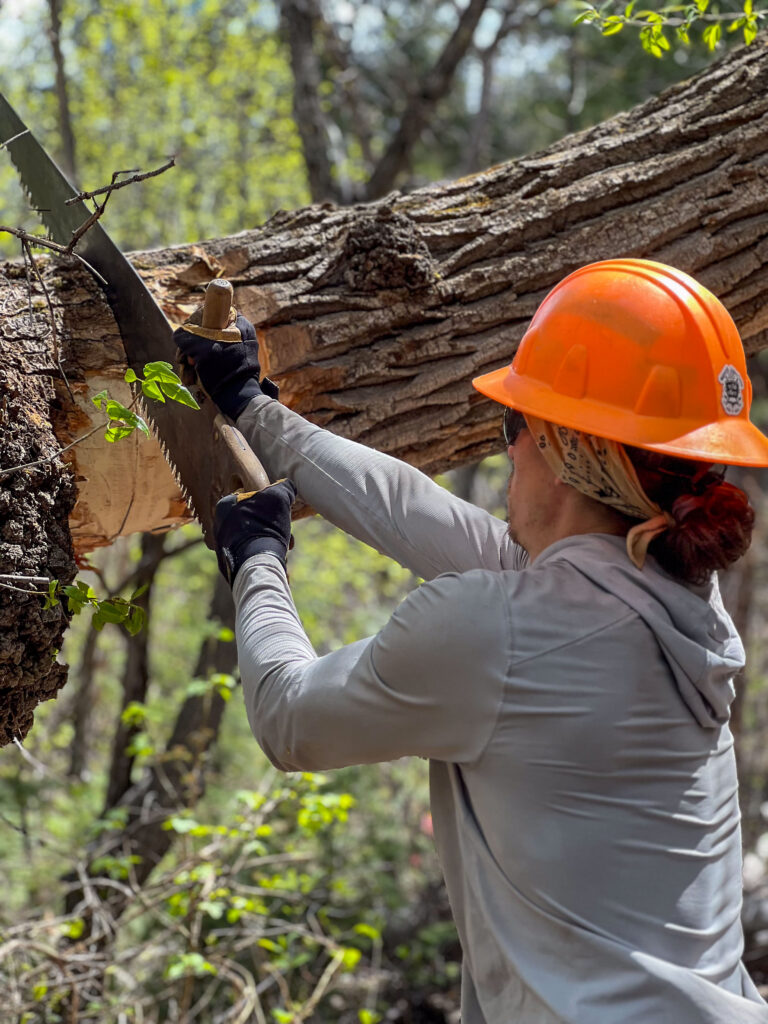



 Sunshine & Snowstorms
Sunshine & Snowstorms  on the Highline Trail
on the Highline Trail





